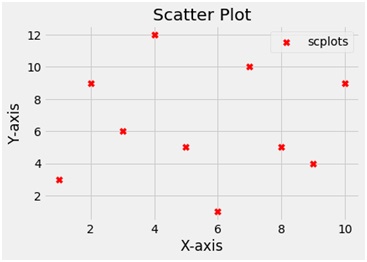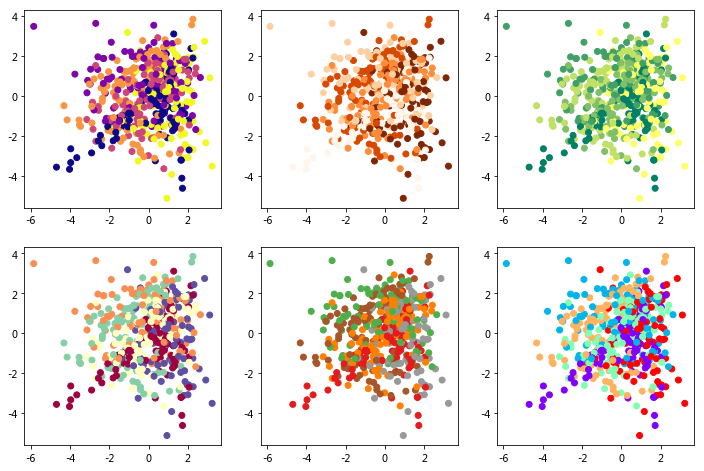
For example if x = 4 then we would predict that y = 23.32: The exception is c, which will be flattened only if its size matches the size of x and y. We can use this equation to predict the value of the response variable based on the predictor variables in the model. Fundamentally, scatter works with 1D arrays x, y, s, and c may be input as N-D arrays, but within scatter they will be flattened. We can also get the equation for this line using the print() function: print(model4)

Python3 import matplotlib.pyplot as plt a 1, 3, 5, 7 b 11, -2, 4, 19 plt. plot(polyline, model4(polyline), ' -', color=' red') Python3 import matplotlib.pyplot as plt a 1, 3, 5, 7 b 11, -2, 4, 19 plt.scatter (a, b) c 1, 3, 2, 1 plt.errorbar (a, b, yerrc, fmt'o') plt.show () Output: Example 2: Adding Some errors in the ‘x’ value. #add fitted polynomial curve to scatterplot Lastly, we can create a scatterplot with the curve of the fourth-degree polynomial model: #fit fourth-degree polynomial #calculated adjusted R-squared of each modelįrom the output we can see that the model with the highest adjusted R-squared is the fourth-degree polynomial, which has an adjusted R-squared of 0.959. #define function to calculate adjusted r-squared This value tells us the percentage of the variation in the response variable that can be explained by the predictor variable(s) in the model, adjusted for the number of predictor variables. To determine which curve best fits the data, we can look at the adjusted R-squared of each model. plot(polyline, model5(polyline), color=' orange') plot(polyline, model4(polyline), color=' blue') plot(polyline, model3(polyline), color=' purple') plot(polyline, model2(polyline), color=' red') Creating Scatter Plots in Python Using plt.

plot(polyline, model1(polyline), color=' green') A second, more powerful method of creating scatter plots is the plt.scatter function, which can be used very similarly to the plt.plot function: In 6. #add fitted polynomial lines to scatterplot Next, let’s fit several polynomial regression models to the data and visualize the curve of each model in the same plot: import numpy as np Step 1: Create & Visualize Dataįirst, let’s create a fake dataset and then create a scatterplot to visualize the data: import pandas as pdĭf = pd.
PLT SCATTER PYTHON HOW TO
The following step-by-step example explains how to fit curves to data in Python using the numpy.polyfit() function and how to determine which curve fits the data best. pyplot.scatter allows for passing to c an array that corresponds to groups, which will then color the points based on those groups.

Often you may want to fit a curve to some dataset in Python.


 0 kommentar(er)
0 kommentar(er)
